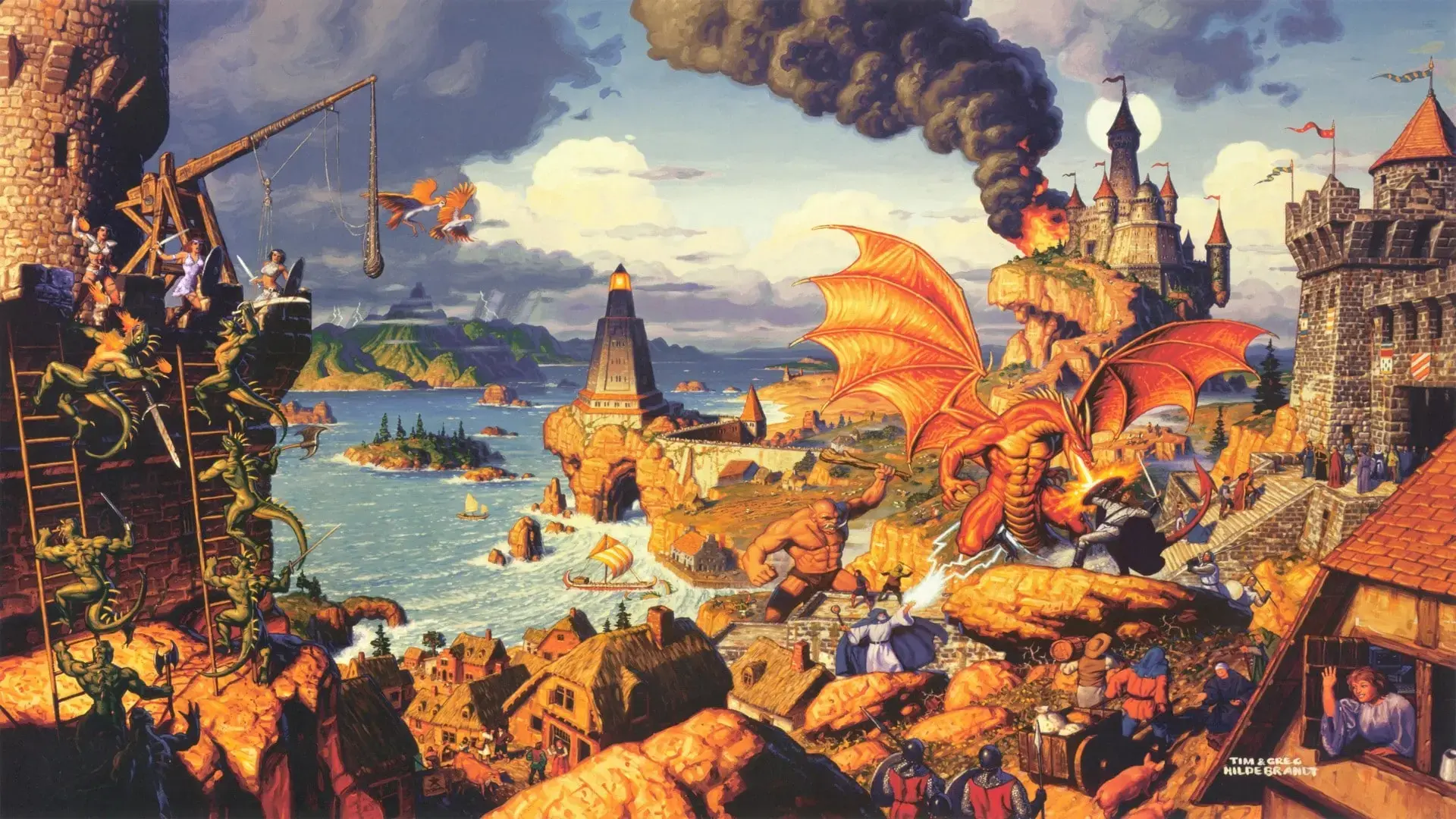The Complete History of Role-Playing Games (RPGs): Part 11 – Living in a Multiplayer World
Role-playing games, or RPGs, form one of the most lucrative genres of computer games in the world today, demanding tens of hours of dedicated play from gamers and rewarding them with rich storylines, memorable characters, and an often-emotional escape into other worlds.
How did RPGs come to be? What are their origins and how did this once-minor pastime of interactive storytelling become an industry behemoth? Here at Ultimate Gaming Paradise, we have some of the answers, brought to you in this growing series of articles.
Enter the MMORPG.
Episode Eleven: Living in a Multiplayer World
The ultimate dream, to have a computer game where you could exist as a different person in a different world. Role-playing, with true freedom, became a reality with the birth of the Massively Multiplayer Online Role-Playing Game (MMORPG). Those early thoughts and conversations that took place—the ‘wouldn’t it be cool if…’ and ‘imagine if a computer could…’ ideas—were coming to fruition.
Starting with Ultima Online. Sort of.
Popular Products
The Birth of Multiplayer Madness
Although it is often given credit as being the first MMORPG and is certainly the game that coined the term, Ultima Online wasn’t actually the first attempt to bring players from across the globe together in some sort of virtual world. That credit actually goes to a Commodore 64 game called Habitat.
Habitat, however, wasn’t a role-playing game as we have come to see them in this series—it was more of an odd chat area where the few users who had modems connected to their C64s could come together and do, well, who knows? The idea of a communal virtual world was so new, people simply didn’t know what to do with it.
So, while Habitat was definitely the birthplace of online multiplayer gaming, it can hardly count here. Something more is definitely needed to make the genre. Let’s see:
- A role-playing element
- Graphics (otherwise it’s a MUD, as featured in part eight)
- Online
- More than sixteen players (to make it ‘massive’)
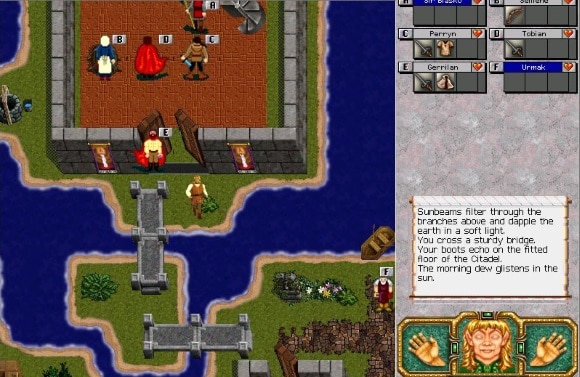
This leads us to Kingdom of Drakkar. In 1989, this game featured all of the above. In truth, it was an extension of a pre-existing rogue-like (though some sources say MUD) called Realm with some basic graphics stapled onto the front. A very niche title, Kingdom of Drakkar had its fans but didn’t quite get the worldwide recognition that would come for the games that follow it.
The first real success was Neverwinter Nights. This AOL game (that’s “America Online”, one of the original dial-up services for connecting to the fledgling internet), can definitely be seen as the first MMORPG for our purposes. Coming from SSI and TSR, Neverwinter Nights was an official Advanced Dungeons and Dragons game. Building on their previous RPG successes, SSI worked with AOL’s Beyond Software team to merge their codebase with online functionality and the first touches of the MMORPG subgenre can be seen.
Something new was emerging out of the murky swamp for RPG enthusiasts.
Ultima Online – The Finest Work of Lord British
The word Ultima has been a constant thread through this series on RPGs. Richard Garriott, the RPG fan and dedicated coder who brought the series to life throughout the 1970s and 1980s, finally accomplished his original vision when the Ultima series went online. The man known as Lord British in the RPG community was still giving.
Fresh In
It was Garriott who invented the term MMORPG, using it to describe Ultima Online, and it was his series with its legions of fans that brought the idea to the wider world. Ultima Online was extremely significant and brought many new ideas to the table. With its rich, quest-driven storyline, it provided an addictive escape from reality that many of the players were gleefully looking for, but it was with player vs. player (PvP) combat that Ultima Online really made its mark.
The idea that players would want to do harm to other players was neither new, nor a surprise for Garriott, and the Ultima Online system was designed to implement it well. But, there has always been a divisive line when it came to PvP combat and player enjoyment. Those who love it, and those who hate it…like, really hate it.
PvP was originally intended to be a side part of Ultima Online; a sense of reality in this freeform world that added to (rather than subtracted from) the player experience. Yet for many (including, somewhat infamously, Garriott himself), PvP combat didn’t improve the game at all. In fact, as it came to dominate the world of Felucca, PvP combat was starting to turn new players away.
It led to the birth of multiple servers, a simple-sounding concept that was revolutionary at the time. The idea that different areas of the game world would have multiple clones had never been considered, but doing so would solve many problems—especially the PvP combat one—because other servers could simply turn off player killing. Thus, allowing for a more comfortable player vs. environment game for those who preferred it that way while retaining the feature for the enthusiastic competitive fans.
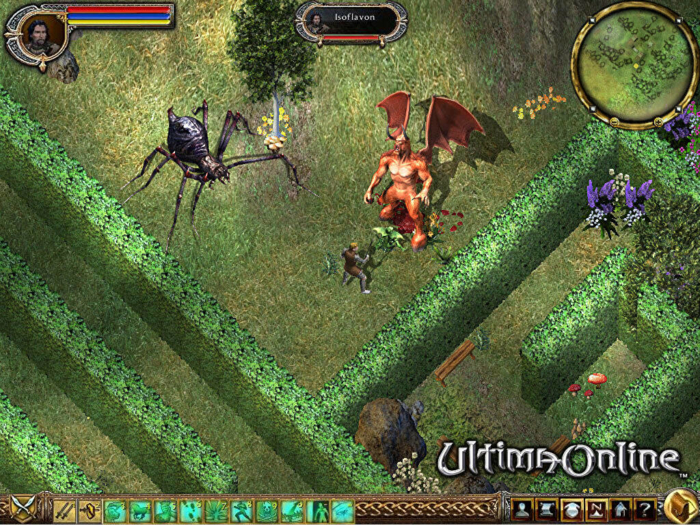
Dealing with Technology
Still in its infancy, the internet was a long way from stable. Players relied on dodgy phone lines, third-party modems, and connections that sometimes felt as if they were made of string in order to log into the games and take part. Many deaths and long delays were caused by simple things—like someone else picking up the phone, or the weather messing about with a signal. It was a time when patience was key and long delays were simply par for the course.
That didn’t mean, however, that players were not the sort to complain. Far from it. Everyone wanted everything to just work and when it didn’t the screams could be heard across the globe.
Server capacity was super important. When games came out, the publishers had no idea how many subscribers they would get. Would it be a thousand? Ten thousand? More? They set up machines dedicated to running the virtual worlds and just hoped that those servers wouldn’t crash. A balancing act that still exists to this day. Does anyone remember the SimCity 2013 launch fiasco?
But they did crash…and often.
Lag in the early days was a constant companion, that technological delay that means data takes just a little longer to get to its destination and responses are stuttered or staggered. When fighting a huge beast, timing the execution of a block or throwing out a key spell and having everything suddenly slow or pause was a rude interjection in the smooth play. And it only became worse when people came home from school and there was a sudden surge of enthusiastic players logging on to the server.
Popular Products
When Ultima Online split its worlds in two, separating those who liked to murder others from those who wanted a relatively safer life, it also lowered the load on the servers, localised services to real-world geographical regions, and fixed a whole host of previously-devastating technological issues.
For that, we are forever grateful!
EverQuest
If graphics were a shining step on the way to seeing multiplayer online fantasy come to life, then 3D graphics were yet another level. EverQuest, published by Sony Online Entertainment and Ubisoft in 1999, brought that very thing to the table.
For many, everything that had come before was now irrelevant. In EverQuest, they found exactly what they were looking for.
The success was simply unprecedented. As more and more people heard of EverQuest, they signed up. That $9.99 monthly fee to play felt like nothing when compared to the cost of going out and interacting with people in the real world. Players were more than happy to pay it.
EverQuest boasted tens of thousands of players within the first year, building on its success with an expansion pack in 2000, followed by a second one in 2001, and so on. Now on its 28th expansion, the game that is more than two decades old continues to draw in solid numbers, despite only relatively basic updates to its look and feel in that time.
As the new millennium dawned, RPGs had reached a state of near-perfect escapism.
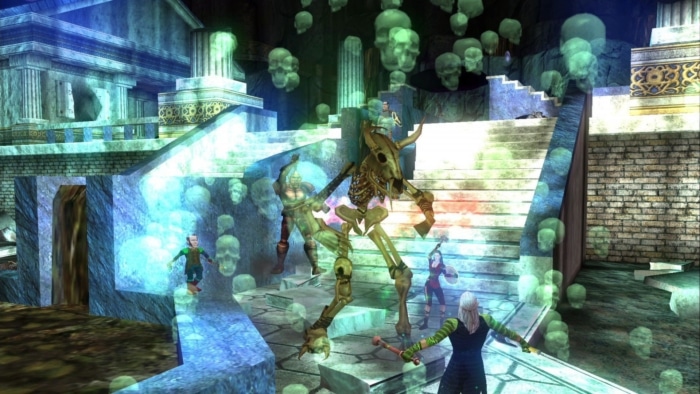
Online Role-Playing on Consoles
EverQuest managed to hold on to its crown for some time, fending off threats from other companies keen to get a slice of such a lucrative pie. Attempts to surpass it were made, and some games boasted strong numbers, but still, the player base for the renowned title grew.
There was one problem: EverQuest forced you to own a Windows-based PC and, for many players, this was prohibitively expensive and even undesirable. They wanted to play on their consoles.
The best they had was Phantasy Star Online on the Dreamcast. Not only was this not an MMORPG (it could only handle four players), but the Dreamcast wasn’t the success it deserved to be. No, what players were looking for was something on the PlayStation.
It was Square Enix who delivered, bringing their biggest name to the MMORPG war. Final Fantasy XI was launched in 2002.
Final Fantasy VII redefined the RPG in 1997. Its sequels, Final Fantasy VIII and Final Fantasy IX had both done well, but Final Fantasy X on the PlayStation 2 had wowed the world once more, solidifying the series as the most desired JRPG worldwide. What, then, would the Final Fantasy team bring to the massively multiplayer arena?
Fresh In
The answer was something actually really good. Final Fantasy XI managed to squeeze a huge portion of what people loved about the series into an open-world online adventure. Taking cues from Ultima Online and EverQuest among others, Final Fantasy XI offered quest-driven storylines, PvP play, community events, rare and limited-edition equipment, a comprehensive chat system, party, and guild support, and much more, all tied up in a very familiar package that included Chocobos, Marlboro monsters, and anime-styling. It made a dent in EverQuest’s crown on the Windows platform and created a whole new area for success with support for the PlayStation 2. Not only that, but it allowed for cross-platform play, meaning those on the consoles could play seamlessly with their PC friends.
On paper, and in practice, Final Fantasy XI should have been the definitive MMORPG of its decade, standing tall above those that came both before and after. So what happened?
Other Genres
Not all role players are into dragons and wizards. The first exodus of players to leave Final Fantasy XI’s world of Vana’diel went to Tattooine. Star Wars Galaxies opened in 2003 and many players swapped swords for lightsabers, hoping to become Jedi. With a very different feel to the game than any of the other big names (Final Fantasy XI, EverQuest, and Ultima Online), Star Wars Galaxies was able to carve a space out for itself, helped by some impressive graphics and very familiar music.
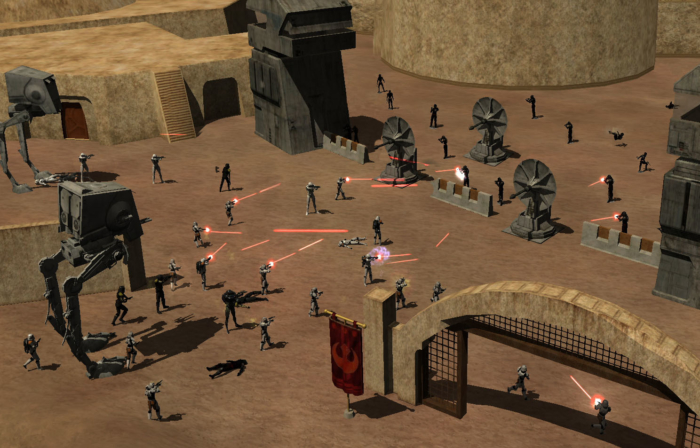
Another new contender came to the market that same year with EVE Online. Again set in space, but with a unique IP. EVE Online boasted a very different play experience, with a single shared universe (despite still utilising multiple servers) and a feeling of seriousness perhaps lacking in other titles.
Despite the success of both Star Wars Galaxies and EVE Online, however, it was neither of these that would revolutionise the MMORPG world.
That was down to something a lot more colourful.
World of Warcraft
Singularly the most famous MMORPG of them all, World of Warcraft brutalised the competition, taking players from every previous MMORPG and converting many new users to the genre. Its impact wasn’t just significant, it was mind-blowing.
Much of World of Warcraft’s success can be attributed to understanding the casual market. Where almost all other MMORPGs that had come before had been focused on role playing, statistics, or slow progression, World of Warcraft set out to be fun above all else. The game was far more forgiving than any other MMORPG, and did little to punish players for character death. While these features were criticised by many players at the time for being ‘dumbed down’, they were shown to be simply more enjoyable and attracted a wider and younger player base. Furthermore, World of Warcraft was an incredibly polished game with bright, vibrant graphics and inviting environments that stood it apart from the harder edges of games like Final Fantasy XI and EverQuest, the latter of which was starting to look dated.
Popular Products
Addiction to MMORPGs had always been a thing with many players spending hours away from real-life family and friends in order to get more time levelling up and questing. With World of Warcraft, player addiction became a serious concern. Terms such as ‘WoW-widow’ and a group for ‘Wowaholics Anonymous’ became part of the culture as World of Warcraft dominated players’ time.
Not everything in its legacy is so negative, however. It was World of Warcraft that really brought the concept of raids to the forefront, using local instances of dungeons to provide a cross-over MMORPG/traditional action game feel to the gameplay—something that can be seen in many subsequent online titles. Plus, as Final Fantasy VII did for the one-player RPG game, World of Warcraft brought the MMORPG into the mainstream.
Orcs and Tauren never had it so good.
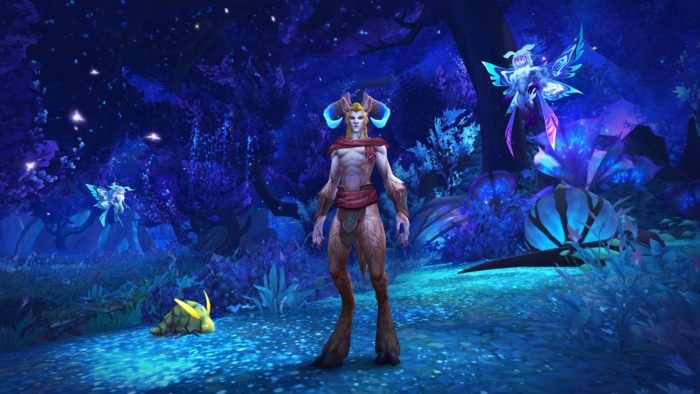
Coming Next…
Massively multiplayer was not for everyone so what could the single-player RPG now offer to entice players? How about a real sense of consequence?
Next time we look at choices in role-playing games and how they shape the stories.

